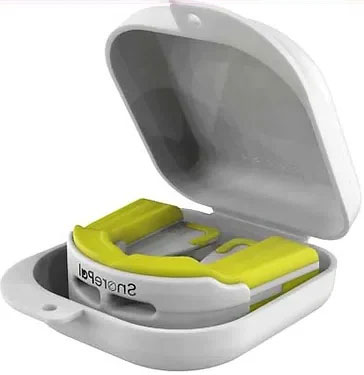Sleep apnea and snoring are two common sleep disorders that can significantly impact one’s quality of life. Both conditions can lead to daytime fatigue, irritability, and even more severe health consequences if left untreated. While there are various treatment options available, two popular methods are mouthpieces and surgery. In this blog post, we will discuss the cost-effective solution to treating sleep apnea and snoring and compare the effectiveness, cost, and potential risks of mouthpieces versus surgery.
Mouthpieces, also known as oral appliances, are custom-made devices that are worn in the mouth during sleep. They work by positioning the jaw forward or holding the tongue in place, preventing the airway from collapsing and reducing snoring and sleep apnea episodes. Mouthpieces are considered a less invasive and more affordable alternative to surgery, with prices ranging from $50 to $500.
On the other hand, surgery for sleep apnea and snoring involves various procedures that aim to widen the airway and improve breathing during sleep. The most common surgical options include UPPP (uvulopalatopharyngoplasty), tonsillectomy, septoplasty, and maxillomandibular advancement. These surgeries can cost anywhere from $1,000 to $12,000, depending on the type of procedure and location.
Effectiveness is a crucial factor to consider when deciding between mouthpieces and surgery for treating sleep apnea and snoring. Studies have shown that both methods can effectively reduce snoring and improve sleep apnea symptoms. However, surgery is generally considered more effective in severe cases, while mouthpieces are better suited for mild to moderate sleep apnea. Additionally, surgery has a higher success rate, with up to 80% of patients experiencing significant improvement in their symptoms.

The Cost-Effective Solution to Treating Sleep Apnea and Snoring – Mouthpieces vs. Surgery
When it comes to cost, mouthpieces are undoubtedly the more budget-friendly option. They are typically covered by insurance, and even if not, they are significantly cheaper than surgery. However, it’s worth noting that while mouthpieces have a lower upfront cost, they may require frequent replacements or adjustments, which can add up over time. Surgery, on the other hand, may have a higher initial cost, but it is a one-time expense.
Another essential factor to consider is the potential risks and side effects of each treatment option. Mouthpieces are generally considered safe, with minimal side effects such as jaw pain, tooth discomfort, and excessive salivation. However, some people may find them uncomfortable to wear, and there is a risk of developing temporomandibular joint disorder (TMJ) if not fitted correctly. On the other hand, surgery carries a higher risk of complications, including bleeding, infection, and adverse reactions to anesthesia. Additionally, surgery may also have long-term side effects such as changes in speech and swallowing.
Ultimately, the decision between using a mouthpiece or opting for surgery for treating sleep apnea and snoring depends on individual preferences, severity of the condition, and budget. For mild to moderate cases, mouthpieces may be a more cost-effective and less invasive solution. However, for severe sleep apnea, surgery may provide more significant and long-lasting benefits.
In conclusion, both mouthpieces and surgery are viable options for treating sleep apnea and snoring, with their own unique advantages and drawbacks. Mouthpieces are a more affordable and less invasive option, while surgery has a higher success rate and is more suitable for severe cases. Before making a decision, it is essential to consult with a healthcare professional to determine the best treatment plan for your specific condition.
